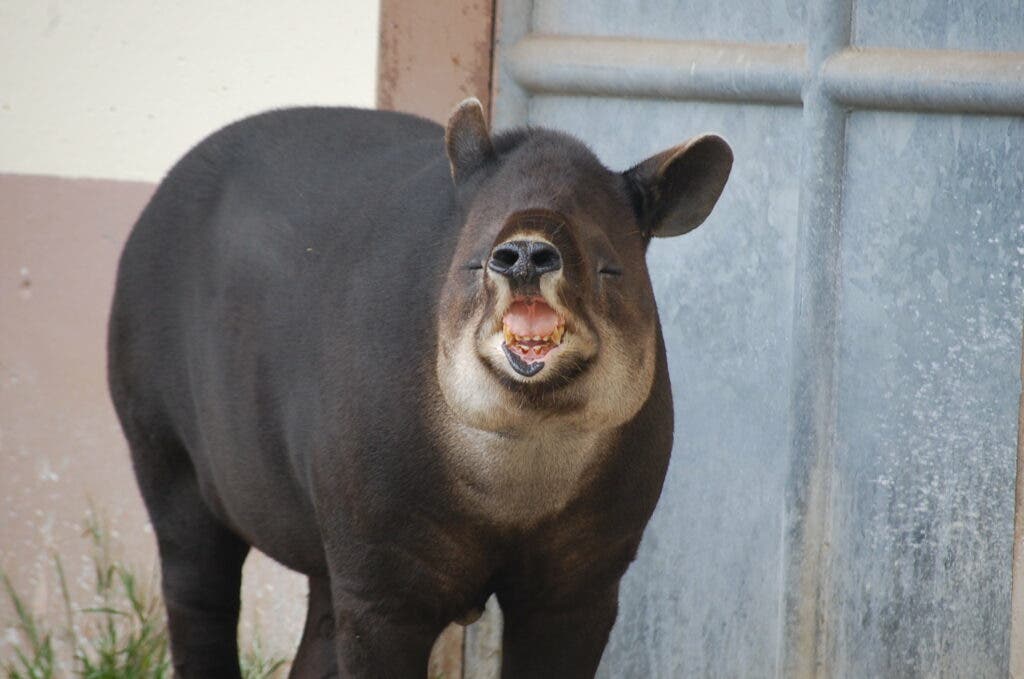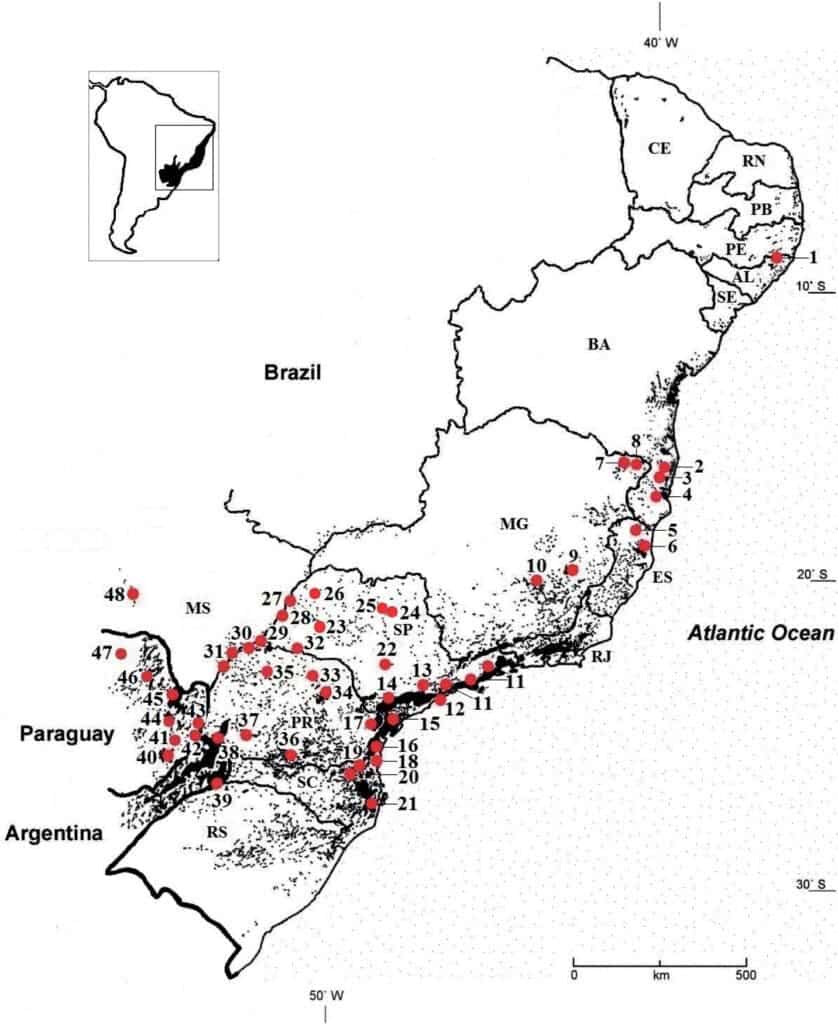They have been around since the Eocene and have survived waves of extinction — but as is the case with many other species, the lowland tapir (Tapirus terrestris) is now under severe risk. Its original range was cut by over 98%, and human activity is the main driver.

The lowland tapir is the biggest land mammal native to South America. It weighs up to 250 kilograms (550 pounds) and can adapt to almost any habitat on the continent. Tapirs can also move across any terrain and are great swimmers, hiding when pursued by predators. They have a diet of over 200 plant species, eating fruits, leaves, twigs, bark, and even soils. All in all, it’s an adaptable creature with many evolutionary perks up its sleeve.
However, tapirs have low reproductive potential, with one offspring after a 13-month gestation and birth intervals of up to three years. This makes them susceptible to population declines by predators. Tapirs are also relatively easy to track, especially by humans — as their habit of fleeting to water doesn’t work against humans. Road-kill is also a big cause of tapir mortality, and they are also vulnerable to habitat destruction. In recent years, this has taken a massive toll on their population.
At the start of the 16th century, tapirs could be found all across the Atlantic Forest, which covers Brazil, Argentina, and Paraguay. But over the past 500 years, the situation drastically changed. By the 19th century, tapirs were eradicated from coastal areas and from lower slopes. Hunters extirpated most populations between the 1950s and 1970s. Human infrastructure did the rest.
Kevin Flesher from the Biodiversity Study Center and Patrícia Medici, coordinator of the Lowland Tapir Conservation Initiative, started studying tapirs in 1996, when their conservation status was largely unknown. Since then, they have visited over 90 reserves in the Atlantic Forest, talking to people, and also analyzed 217 date sets. He can now tell a comprehensive and disheartening story.
The challenged tapir
The study showed that there are at least 48 populations of tapirs in the Atlantic Forest, with a population that ranges 2,665 to 15,992 species occupying about 26,000 square kilometers of forest. Tapirs suffered a 98% reduction in their range since Europeans arrived and were removed from north of Bahia and from Rio de Janeiro in Brazil.
Hunting has been the main driver of tapirs’ declines, and in 14 of the populations studied there were confirmed tapir kills. Hunting still happens in over 95%of the forests inhabited by tapirs. Highways are also a big threat. The study identified road-kill as a cause of mortality in six of the eight reserves that are close to highways.

But there are also reasons for optimism. Key populations still survive, and we now know what the biggest threats are.
Some tapir populations remain all over the Brazilian states in the Atlantic Forest, in the Misiones province of Argentina and in nine forest reserves in Paraguay, the researchers found. The largest populations are those in Misiones and the neighboring Iguaçu and Turvo reserves, in Paraná and Rio Grande do Sul, respectively.
In the long-term, the researchers believe that isolation is the main threat, with almost 94% of the tapir populations vulnerable to extinction over the next century because of their small population size. The Atlantic Forest has been largely fragmented over the years because of deforestation, with most of the forests being of less than 50 hectares.
The researchers called for urgent measures to connect the isolated population of tapirs and ensure their long-term conservation. They are cautiously optimistic for the future, as after decades of conservation efforts the situation is starting to improve. Populations of tapirs appear to be stable or increasing, which a much better outlook then what we’ve seen in the past — although these are still only the first steps of an uphill battle.
As with tapirs, the world is facing a big biodiversity crisis, which some have called the sixth mass extinction; an extinction caused by humans. The size of wildlife populations has declined by two-thirds worldwide since the 1970s, according to WWF’s Living Planet Report from 2020. Almost 70% of the drop is explained by land conversion for farming and wildlife trade. The story of the tapirs is that of many other animals, and we have to take swift action if we want to ensure we don’t wipe these populations off the face of the planet.
The study was published in the journal Neotropical.
Was this helpful?



